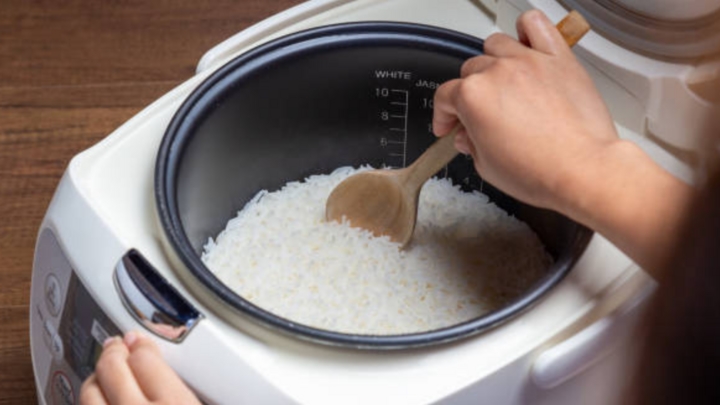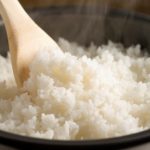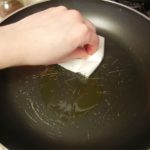The Suihanki, also known as the Japanese rice cooker, is an automatic household device designed for cooking rice by steaming. The rice cooker consists of a heat source, a cooking pot, and a thermal sensing device (to measure and control the temperature of the cooking pot).
Modern rice cookers, besides their primary function of cooking rice, are also utilized for preparing various other dishes.
Common Mistakes When Using a Rice Cooker
With its many conveniences, this appliance is present in most households. However, people still make several mistakes when cooking with a rice cooker, despite owning at least one of them.
Cooking rice too early
Many families, especially those with older members, have the habit of starting the rice cooker a few hours before the meal because they believe that the rice will only be delicious and fluffy after cooking it for a long time. However, this not only consumes more electricity but also shortens the lifespan of the rice cooker. Rice that is cooked too early also tends to be less tasty.
You only need to start the rice cooker about 30-45 minutes before the meal for perfectly cooked, fragrant, and hot rice, without wasting energy.
Pouring rice directly into the pot
This is a common mistake when using a rice cooker. To facilitate the cooking process, many people pour rice directly into the pot. Regardless of whether the pot has a non-stick layer or not, the manufacturers always apply a protective coating to ensure safe cooking. Pouring rice directly into the pot can easily scratch this surface.
The best way is to rinse the rice in a strainer or a small bowl, then transfer the rice into the rice cooker and add water for cooking.
Failing to dry the rice cooker before cooking
If you pour rice directly into the rice cooker, the draining process can cause water to splash around the pot. If you don’t dry it, it can affect the heating plate underneath, causing electrical leakage and damaging the rice cooker. To ensure your safety and the longevity of the rice cooker, you should use a towel to dry the cooking pot before cooking.
Pressing the “cook” button multiple times
In order to keep the rice warm continuously or make burnt rice, many people tend to press the “cook” button repeatedly. This is a common mistake when using a rice cooker and can gradually cause the cooking button to malfunction, resulting in uncooked or overcooked rice. Therefore, you should minimize pressing the “cook” button repeatedly every time you use the rice cooker.
Opening the lid frequently
Opening the lid frequently interrupts the rice cooker’s cooking process, causing the rice to lose its steam and distinctive aroma, and even result in undercooked or less tasty rice. If you really want to check the rice, you should only open the lid when it has indicated that the rice is cooked, then gently fluff the rice grains and close the lid to let it sit for a while or press the “warm” button to keep the rice hot and flavorful.

Avoiding common mistakes when using a rice cooker. (Illustration: Istock)
Scrubbing or using a dishwasher
If rice is left in the cooker for a long time, it can stick and be hard to clean, so many people use metal scrubbers to forcefully scrub. Some people use metal utensils to scrape the rice. The consequences are that the non-stick coating on the rice cooker can peel off, and if not rinsed thoroughly, it can stick to the rice, which is not good for the health of those consuming it.
Placing the rice cooker in a dishwasher makes it endure the pressure of strong water jets and dishwashing detergents, which also leads to the non-stick coating peeling off faster and the rice cooker becoming more susceptible to damage.
The best practice is to soak the rice cooker in warm water for about 10-15 minutes after use, then gently scrub it with a soft cloth to easily clean the rice cooker.
In addition, you should avoid using the rice cooker to ferment yogurt, bake cakes, or make burnt rice regularly, as it will reduce the durability of the cooker. You should plug the rice cooker into a separate power outlet, avoiding sharing it with high-power devices such as refrigerators or microwave ovens, as it can cause electrical overload, leading to electric shocks or explosions.
By avoiding the mistakes mentioned above when cooking with a rice cooker, you will always have delicious rice and protect your appliance for long-term use.
Source: VTC News






































